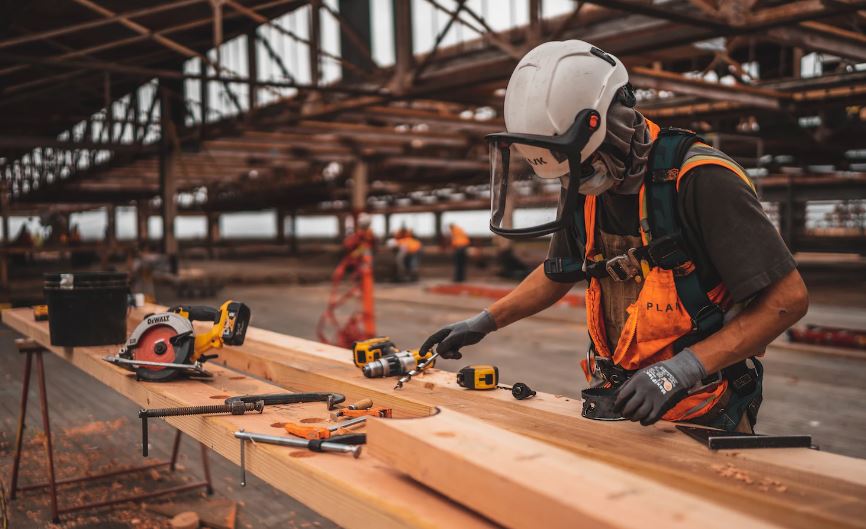Augmented Reality (AR) Redefining the Construction Industry
Augmented reality (AR) is no longer a concept of the future; it’s here, transforming numerous industry sectors, including construction. When superimposed on the physical world, this digital technology enhances our perception of reality, providing a composite view and facilitating real-time interaction.
The construction industry, known for its complexity, has embraced AR to mitigate challenges and streamline operations. From planning to building, AR is reshaping workflows, enhancing collaboration, and, ultimately, reinventing the way we construct.
This article will explore the impact and benefits of AR in construction, elucidating its potential to revolutionize this age-old industry. After reading today’s article, click the following link to learn more about augmented reality in construction.
Contents [hide]
Augmented reality – a quick overview
Augmented reality is an exciting technology that bridges the digital and physical realms by overlaying computer-generated information such as images, sounds or GPS data onto our view of reality to enhance our perception of it.
This “augmentation” can be achieved using various devices, including smartphones, tablets, AR glasses, and headsets. AR functions primarily on three components:
- Sensors and cameras: These are essential for collecting real-world interactions and user data. The camera scans the surroundings and provides a live feed. The sensors capture the necessary depth, orientation, and location details.
- Processing unit: This acts like a computer and is responsible for processing the data gathered by the sensors. It coordinates the sound, aligns with the movement, and manages the graphics.
- Projection system: This displays the digital content in a user’s field of view. Depending on the device, the system might project the data onto a screen or superimpose it directly into the user’s view of the real world.
AR’s versatility allows it to be used in various fields, from gaming and entertainment to education, healthcare, and, as mentioned earlier, construction. The technology aims to improve our efficiency and effectiveness in interacting with the digital and physical world. Its capabilities to conjure 3D models, provide interactive experiences, and overlay contextual information are what truly sets it apart.
Emergence of AR in the construction industry
AR’s introduction into the construction industry dates back to 2010, yet it has seen dramatic growth over time. Initial use cases focused on design visualization; architects and planners could project 3D architectural models onto real-world environments for immersive 3D viewing of proposed designs that take into account all relevant contexts.
This offered an upgrade over traditional 2D blueprints, significantly enhancing understanding and communication of design intent among all stakeholders.
Applications of AR in the construction industry
AR technology has proven its worth in construction by revolutionizing traditional processes and providing new levels of efficiency and accuracy. Here are some areas where AR is making an impactful contribution:
Building information modeling (BIM)
AR enhances BIM visualization by overlaying the digital model onto the physical site, providing a comprehensive view of how the proposed structure will interact with the existing environment.
This helps identify potential conflicts or design errors in the early stages of construction. BIM with AR also aids in project planning, enabling real-time updates and facilitating collaborative decision-making processes.
On-site construction
AR assists in on-site construction operations by providing digital overlays of the construction plan. This helps workers visualize the final output and better understand their tasks. For instance, an AR headset can provide step-by-step instructions on a complex task, improving worker safety and productivity.
Maintenance and repairs
AR can be used to visualize the internal systems of a building, like plumbing or wiring, without having to dismantle anything. This significantly simplifies maintenance tasks and minimizes downtime.
Training
AR can simulate construction scenarios for training purposes, providing a hands-on experience without any real-world risks. This can significantly improve the skills of construction workers and reduce the chances of on-site accidents.
Client presentation
AR can also serve as a powerful tool in client presentations. Clients can take a virtual walk through the proposed design, enabling them to better comprehend the final product. This can assist in gaining client approval and making necessary modifications in the early stages of the project.
The bottom line: AR as a game-changer in construction
In conclusion, augmented reality is undeniably a game-changer in the construction industry. The way it can create immersive experiences radicalizes the traditional design, planning, and building processes. By providing enhanced visualization, improving safety and efficiency, and fostering better communication among stakeholders, AR is revolutionizing the way we construct.
As we continue to explore and understand its capabilities, the future of AR in construction holds immense promise. It is not merely a technological advancement but a technological shift in how we approach construction, promising a future of increased precision, safety, and efficiency.



